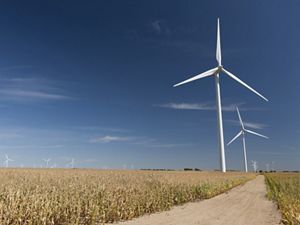The TFCA program creates unique opportunities for public-private partnerships that lead to greater investment from U.S.-based NGOs and improved outcomes for conservation.
The Tropical Forest and Coral Reef Conservation Act (TFCA) was reauthorized in 2019, expanding a highly successful “debt-for-nature” program that has produced tremendous returns on investment over the last two decades. The Nature Conservancy (TNC) respectfully requests that Congress provide $20 million for the TFCA in fiscal year 2024 international conservation appropriations.
Since first enacted in 1998, the TFCA has offered eligible countries opportunities to reduce their official concessional debt owed to the U.S. government while generating funds locally to conserve biological diversity and protect ecologically and economically vital forest ecosystems.
Under TFCA agreements, countries that meet certain economic and political criteria set forth in the legislation may redirect debt payments they would have made to the United States into local grant-making funds.

By the Numbers
- TFCA agreements have saved more than 67 million acres of tropical forest in countries such as Botswana, Brazil, Philippines and Indonesia.
- According to the Congressional Research Service, since 1998, $233.4 million has been used under the TFCA to restructure loan agreements in 14 countries for 20 forest projects.
- TFCA programs will generate more than $339 million for grants and projects to help protect and sustainably manage tropical forests in beneficiary countries.
- The TFCA leverages a significant amount of additional financing from other organizations. For example, The Nature Conservancy, Conservation International and the World Wildlife Fund have together contributed an additional $22.5 million to 12 of the 20 total agreements, enabling more debt to be treated.
- During the life of the agreements, significant additional leverage of TFCA funds has generated another $83 million from a combination of interest income, capital gains, cost-sharing by grantees and co-financing of projects from additional donors.
Impacts of the TFCA
The TFCA program has provided a number of benefits to the United States and beneficiary countries. The reauthorization legislation would enable beneficiary countries to redirect a portion of their debt payments to local forest and coral reef conservation activities instead of making payments to the U.S. government.
These local funds will, in turn, support activities that complement U.S. bilateral assistance programs. Grants to local communities and conservation groups under the TFCA program help to strengthen civil society and build public-private partnerships in developing countries, thereby advancing U.S. democracy objectives.
Long term, the TFCA program is designed to provide a steady stream of financing for the implementation of multi-year projects and programs.
Public-Private Partnerships
The TFCA creates unique opportunities for public-private partnerships, leading to greater investment from U.S.-based NGOs and improved outcomes.
The United States has concluded 20 TFCA debt treatment agreements with 14 countries, and these programs will generate more than $339 million for tropical forest conservation through congressionally appropriated funds and additional donations. This ensures funds go toward building the capacity of local community organizations on the frontlines of conservation to complement government-sponsored activities.



